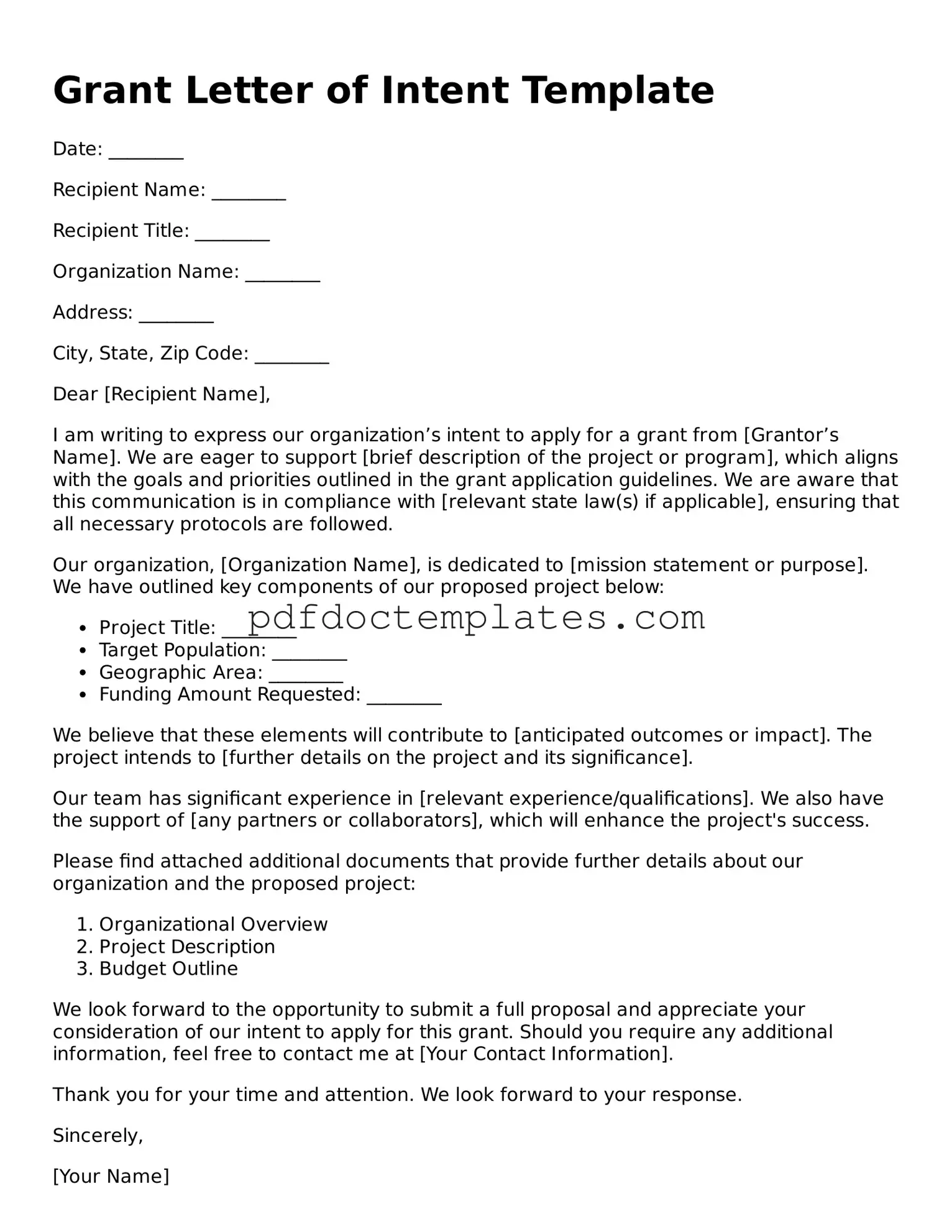Grant Letter of Intent Template
Date: ________
Recipient Name: ________
Recipient Title: ________
Organization Name: ________
Address: ________
City, State, Zip Code: ________
Dear [Recipient Name],
I am writing to express our organization’s intent to apply for a grant from [Grantor’s Name]. We are eager to support [brief description of the project or program], which aligns with the goals and priorities outlined in the grant application guidelines. We are aware that this communication is in compliance with [relevant state law(s) if applicable], ensuring that all necessary protocols are followed.
Our organization, [Organization Name], is dedicated to [mission statement or purpose]. We have outlined key components of our proposed project below:
- Project Title: ________
- Target Population: ________
- Geographic Area: ________
- Funding Amount Requested: ________
We believe that these elements will contribute to [anticipated outcomes or impact]. The project intends to [further details on the project and its significance].
Our team has significant experience in [relevant experience/qualifications]. We also have the support of [any partners or collaborators], which will enhance the project's success.
Please find attached additional documents that provide further details about our organization and the proposed project:
- Organizational Overview
- Project Description
- Budget Outline
We look forward to the opportunity to submit a full proposal and appreciate your consideration of our intent to apply for this grant. Should you require any additional information, feel free to contact me at [Your Contact Information].
Thank you for your time and attention. We look forward to your response.
Sincerely,
[Your Name]
[Your Title]
[Organization Name]
[Contact Information]
